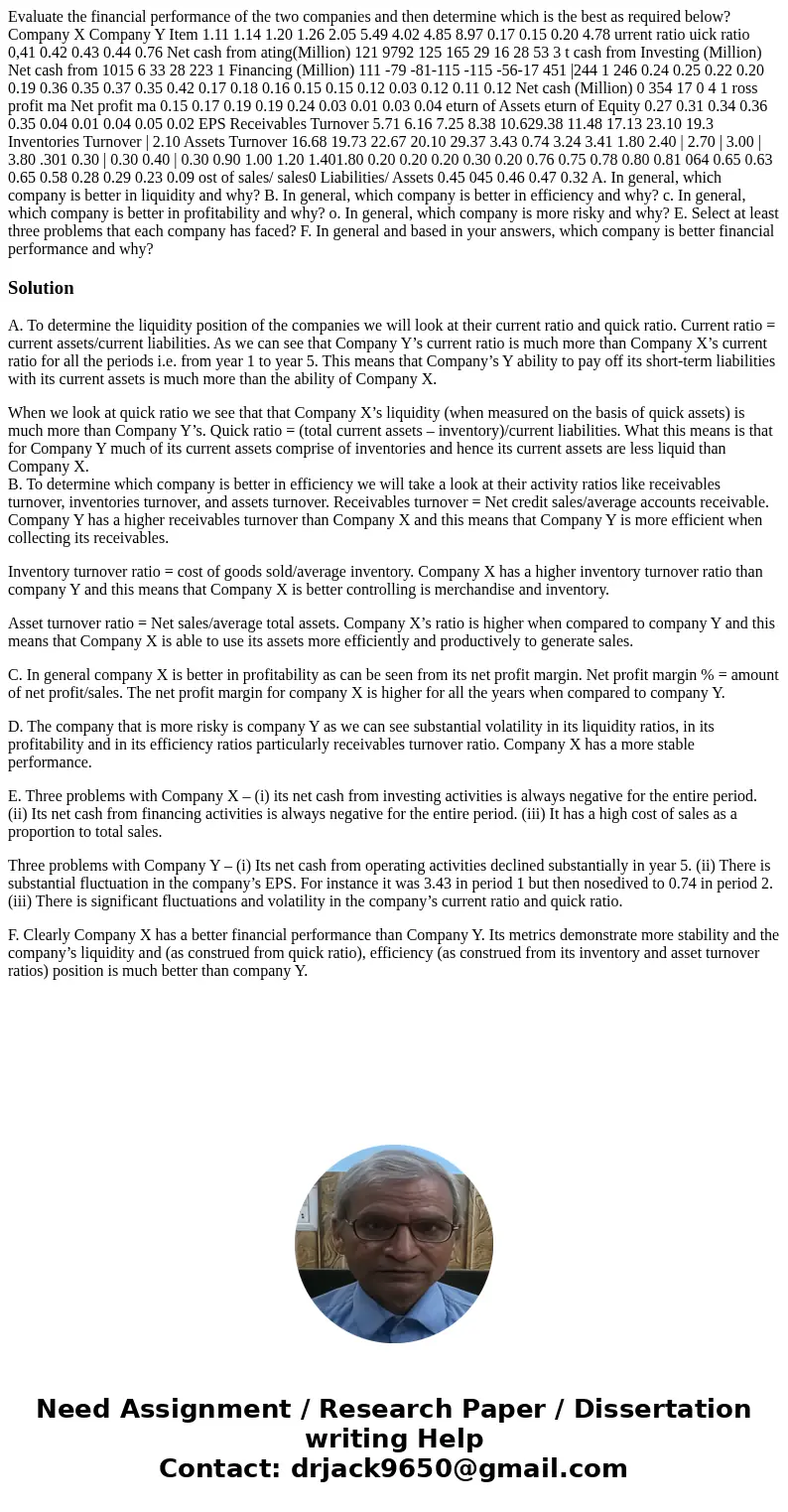Evaluate the financial performance of the two companies and
Solution
A. To determine the liquidity position of the companies we will look at their current ratio and quick ratio. Current ratio = current assets/current liabilities. As we can see that Company Y’s current ratio is much more than Company X’s current ratio for all the periods i.e. from year 1 to year 5. This means that Company’s Y ability to pay off its short-term liabilities with its current assets is much more than the ability of Company X.
When we look at quick ratio we see that that Company X’s liquidity (when measured on the basis of quick assets) is much more than Company Y’s. Quick ratio = (total current assets – inventory)/current liabilities. What this means is that for Company Y much of its current assets comprise of inventories and hence its current assets are less liquid than Company X.
B. To determine which company is better in efficiency we will take a look at their activity ratios like receivables turnover, inventories turnover, and assets turnover. Receivables turnover = Net credit sales/average accounts receivable. Company Y has a higher receivables turnover than Company X and this means that Company Y is more efficient when collecting its receivables.
Inventory turnover ratio = cost of goods sold/average inventory. Company X has a higher inventory turnover ratio than company Y and this means that Company X is better controlling is merchandise and inventory.
Asset turnover ratio = Net sales/average total assets. Company X’s ratio is higher when compared to company Y and this means that Company X is able to use its assets more efficiently and productively to generate sales.
C. In general company X is better in profitability as can be seen from its net profit margin. Net profit margin % = amount of net profit/sales. The net profit margin for company X is higher for all the years when compared to company Y.
D. The company that is more risky is company Y as we can see substantial volatility in its liquidity ratios, in its profitability and in its efficiency ratios particularly receivables turnover ratio. Company X has a more stable performance.
E. Three problems with Company X – (i) its net cash from investing activities is always negative for the entire period. (ii) Its net cash from financing activities is always negative for the entire period. (iii) It has a high cost of sales as a proportion to total sales.
Three problems with Company Y – (i) Its net cash from operating activities declined substantially in year 5. (ii) There is substantial fluctuation in the company’s EPS. For instance it was 3.43 in period 1 but then nosedived to 0.74 in period 2. (iii) There is significant fluctuations and volatility in the company’s current ratio and quick ratio.
F. Clearly Company X has a better financial performance than Company Y. Its metrics demonstrate more stability and the company’s liquidity and (as construed from quick ratio), efficiency (as construed from its inventory and asset turnover ratios) position is much better than company Y.

 Homework Sourse
Homework Sourse